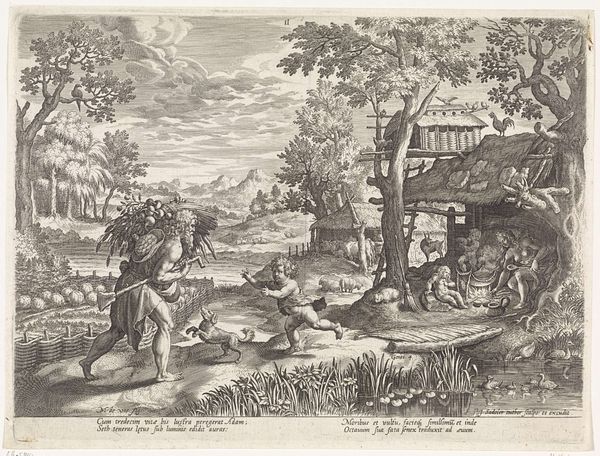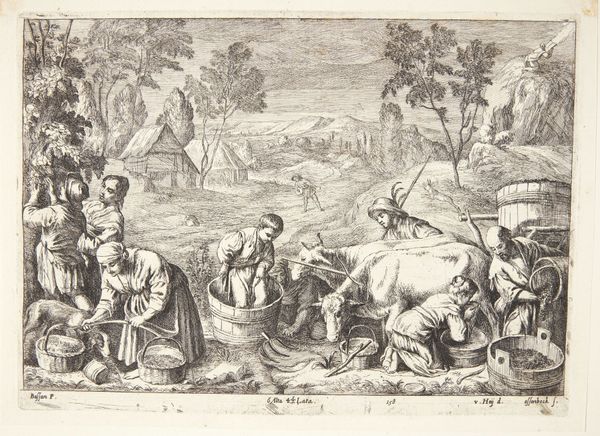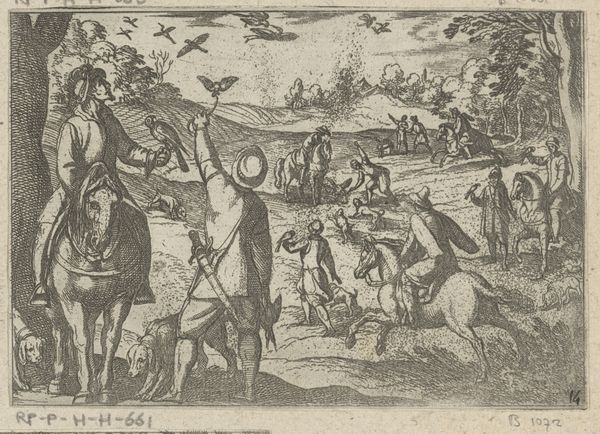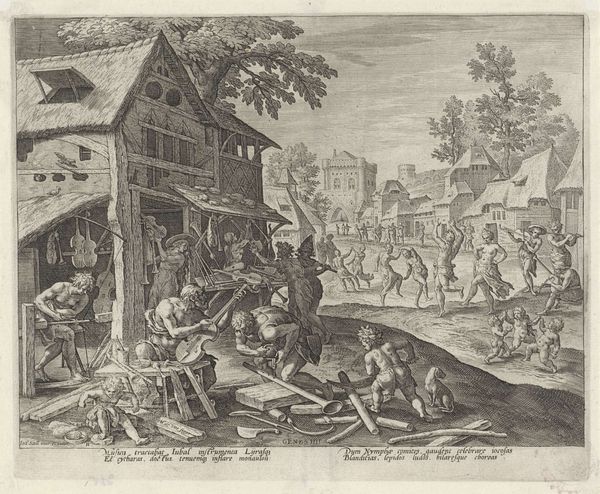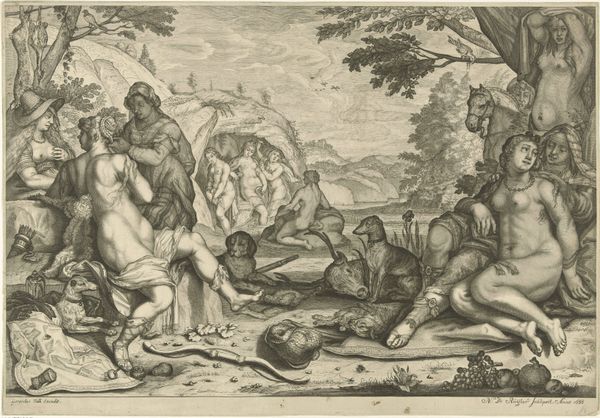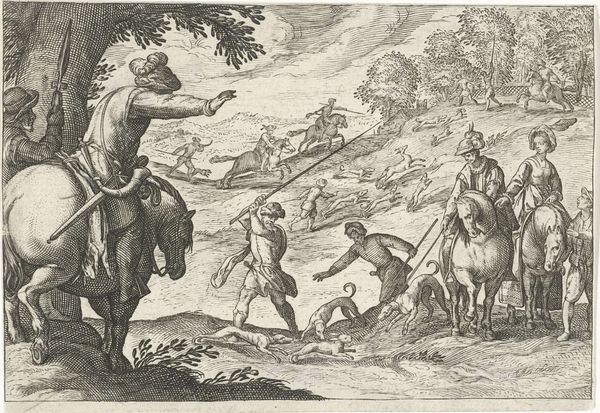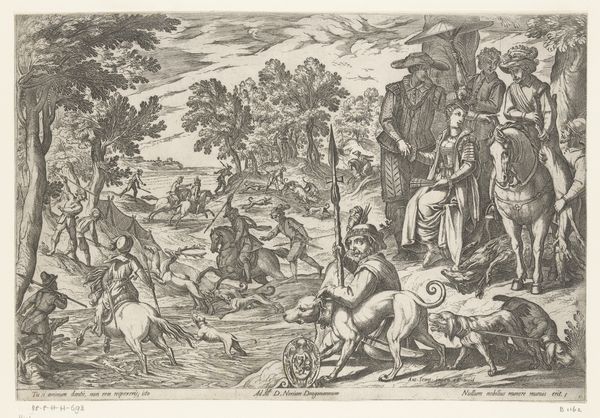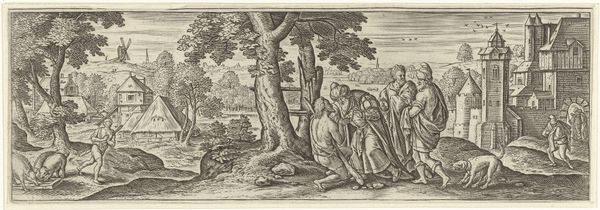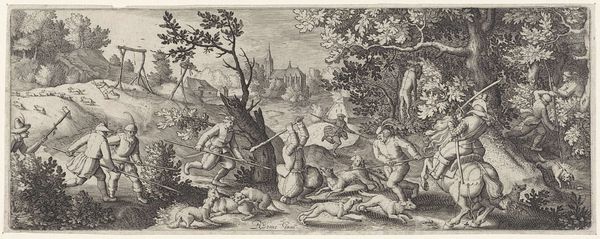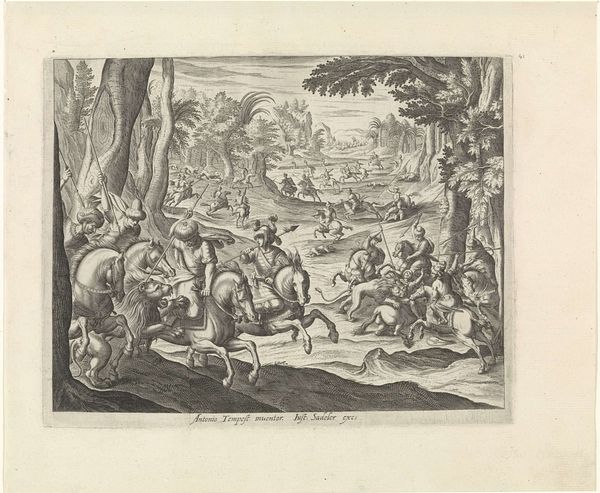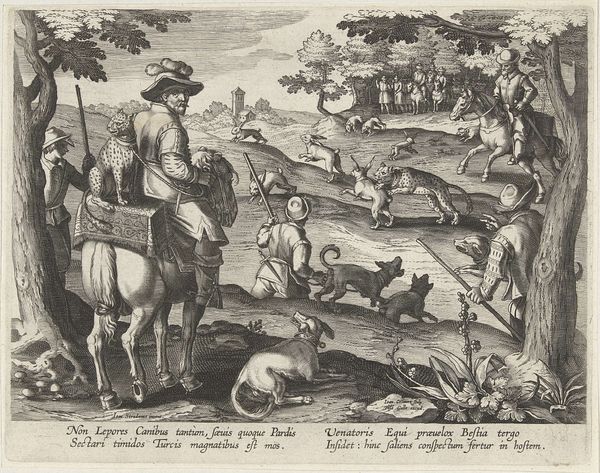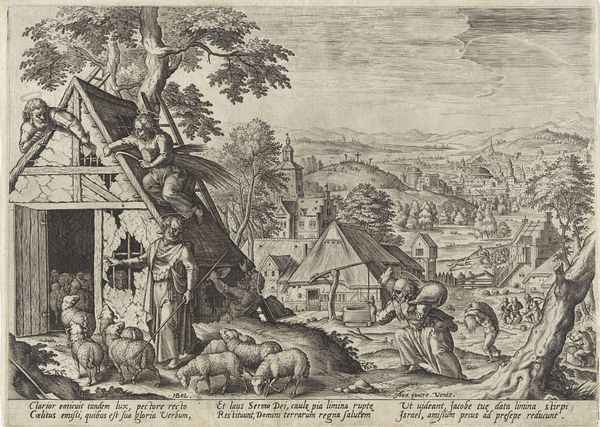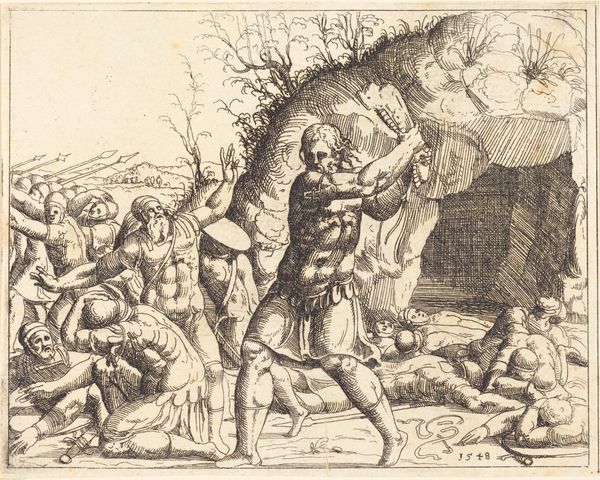
print, engraving
#
pen drawing
# print
#
pen illustration
#
pen sketch
#
mannerism
#
figuration
#
line
#
history-painting
#
engraving
Dimensions: height 203 mm, width 254 mm
Copyright: Rijks Museum: Open Domain
Curator: This engraving, created around 1583 by Johann Sadeler I, is titled "Lamech en zijn twee vrouwen," which translates to "Lamech and his two wives." It resides here at the Rijksmuseum. Editor: It has this unsettling stillness about it despite all the activity; it's a bit haunting in its presentation of domesticity and violence. Curator: Sadeler's Mannerist style certainly contributes to that feeling. Look at the exaggerated figures, the densely packed composition, the play of light and shadow creating almost a stage-like setting. We can read this using structuralism by noting the relationship between the characters and their poses as indicators of inner conflict. Editor: I am far more struck by the means through which this "stage" and "characters" came to life, focusing on its materiality. Imagine the labor-intensive process of creating this detailed image with metal tools and acid. It seems counter-intuitive how much labor had to be deployed to represent something so devoid of apparent labor such as family drama. Curator: Yes, that contrast heightens the effect. From a formal perspective, the linework is incredibly detailed. Observe the variations in stroke weight and direction used to describe the forms and create a sense of depth despite its essentially two-dimensional nature. Note also how Sadeler masterfully contrasts the delicate line work of the foreground figures with the more simplified background. Editor: The socio-cultural implications are also worth exploring here. Lamech's story is rooted in themes of sin and divine retribution; consider how Sadeler used the material process of mass production through printmaking to further distribute interpretations of Biblical history to new audiences. Curator: Precisely. Ultimately, its powerful use of visual language—of contrasting light and shadow, its exaggerated, Mannerist style, and its layered compositional structure—create a deeply compelling and memorable image that engages at once emotionally and intellectually. Editor: Absolutely. From the selection of copper as a base material to its end use as an image in circulation, it makes this a perfect embodiment of art being a product of time and context, forever speaking across them.
Comments
No comments
Be the first to comment and join the conversation on the ultimate creative platform.
